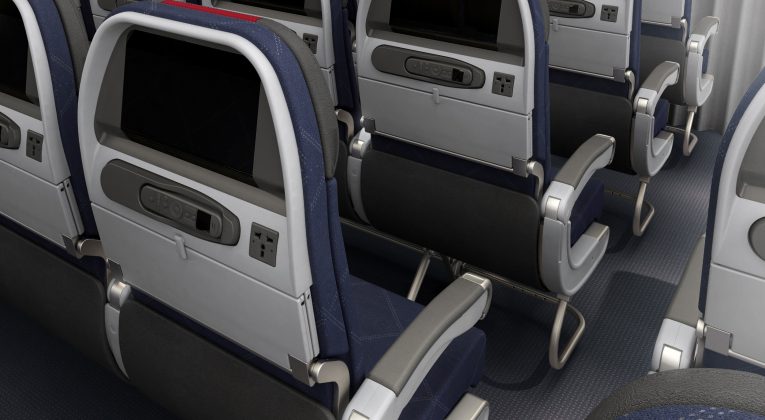Got legroom? Or elbow room? Or any room at all? If you’re flying in coach, probably not.
Travelers are getting taller, heavier, wider. Coach-class seats, on the other hand, are getting smaller and more closely packed. And flights are flying fuller — close to 85 percent full on average. It’s a classic battle, between the interests of the airlines, which equate denser seating and fuller flights with bigger profits, and air travelers, whose comfort and safety are jeopardized by the smaller seats.
Something has to give.
Last year, the House Transportation and Infrastructure Committee considered and ultimately rejected the Seat Egress in Air Travel (SEAT) Act, which would have charged the FAA with setting minimum seat sizes “including width, length, and seat pitch” for the “safety and health of passengers.”
Related:
The bill was voted down, 33 to 26, in February 2016. But it’s not dead. Or rather it’s been reincarnated, as the SEAT Act of 2017.
The new SEAT Act was introduced last week in the House, where it was co-sponsored by Rep. Steve Cohen (D-TN) and Rep. Adam Kinzinger (R-IL), and in the Senate, co-sponsored by Sen. Richard Blumenthal (D-CT), Sen. Charles Schumer (D-NY), Sen. Ed Markey (D-MA), Sen. Bob Menendez (D-NJ), and Sen. Dianne Feinstein (D-CA).
As did its predecessor, the 2017 bill focuses on health and safety, rather than on comfort. According to Rep. Cohen, “Shrinking seat sizes in airplanes isn’t just a matter of comfort but the safety and health of passengers as well. Planes need to be capable of rapid evacuation in case of emergency. In addition, doctors have warned that deep vein thrombosis can afflict passengers who do not move their legs enough during longer flights.”
With the Trump administration’s pronounced aversion to consumer-protection legislation, the bill faces an uphill battle. On the hopeful side of the equation, lawmakers tend to be frequent flyers, traveling regularly back and forth between Washington and their home states. To the extent (likely minimal) that they’re flying coach, they can at least be assumed to have first-hand experience of the problems addressed by the bill.
Reader Reality Check
How would you vote on the SEAT Act: Aye or nay?
After 20 years working in the travel industry, and almost that long writing about it, Tim Winship knows a thing or two about travel. Follow him on Twitter @twinship.
This article first appeared on SmarterTravel.com, where Tim is Editor-at-Large.



